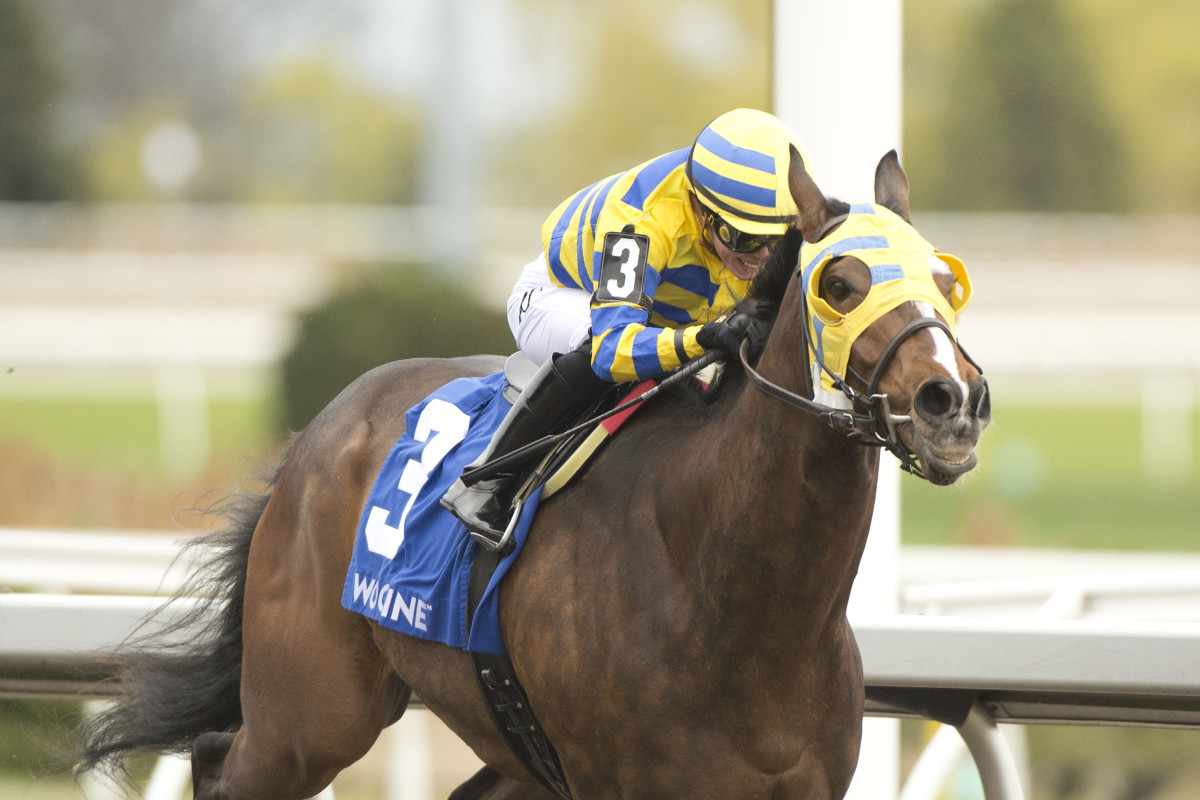Light Up Racing Commends Woodbine For Handling Of Patches O’Houlihan Injury originally appeared on Paulick Report.
Light Up Racing—an initiative which aims to protect horse racing’s future by empowering participants, fostering industry unity, and prioritizing equine welfare—wrote the following text lauding the reaction of Woodbine’s communications team after an injury to the reigning Canadian Horse of the Year, Patches O’Houlihan.
Advertisement
It’s not just what happens. It’s what happens next.
We all hope every racing event is smooth. But in this sport, with elite athletes operating at peak performance, things can and do go wrong. When they do, the way we respond is everything.
Take the recent case of Patches O’Houlihan at Woodbine to see transparent communications done well. He pulled up after winning the G2 Highlander and was vanned off.
Here’s how Woodbine communicated it: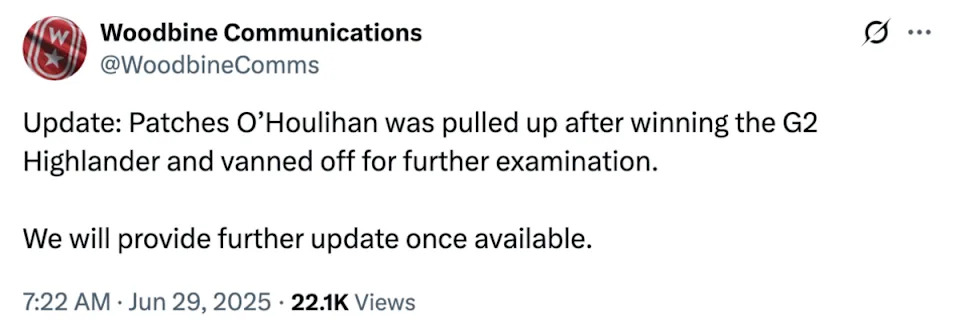
First update: within five minutes, calmly confirming he was pulled up and being assessed.
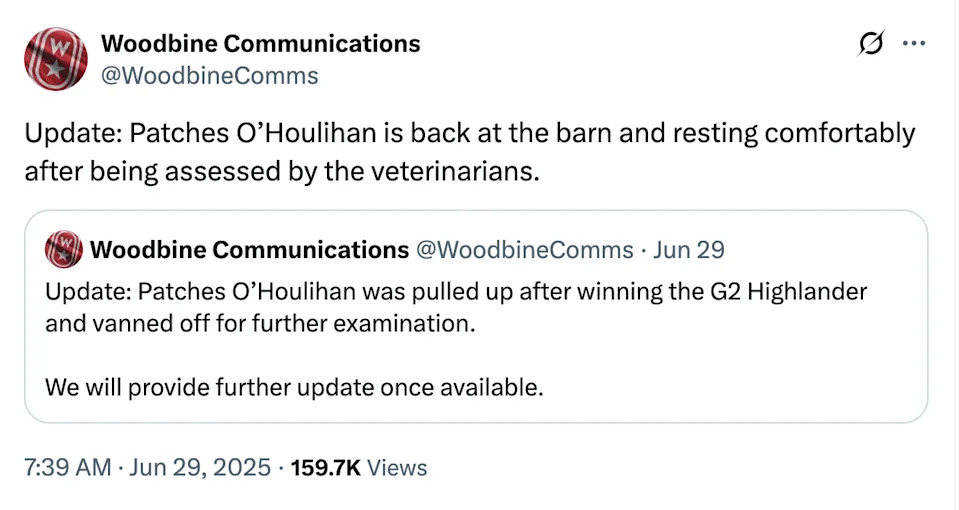
Second update: 17 minutes later, the next follow up.
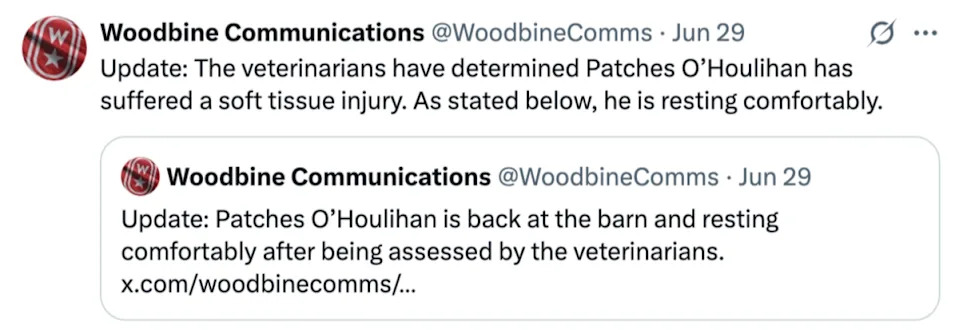
Third update: specifics of the injury confirmed.
For a long time, racing defaulted to the “never complain, never explain” model, Royal Family-style. Keep your head down, say nothing, and hope the headlines move on.
That approach might have worked in the broadcast era.
But in today’s world of smartphones, social media, and citizen scrutiny?
Silence looks like guilt.
Opacity invites speculation.
People expect transparency.
When something goes wrong, they want to see it acknowledged, and addressed. Not shouted from the rooftops. Just handled with care and available when they do a quick social media or google search to find a follow-up.
Woodbine’s approach shows that it’s possible to do just that. They didn’t sensationalize the incident, nor did they hide it. They told the truth, clearly and respectfully, and moved on. It’s good crisis communications, and it’s how trust is built.
Advertisement
Here’s an example of a post where the outcome wasn’t so positive.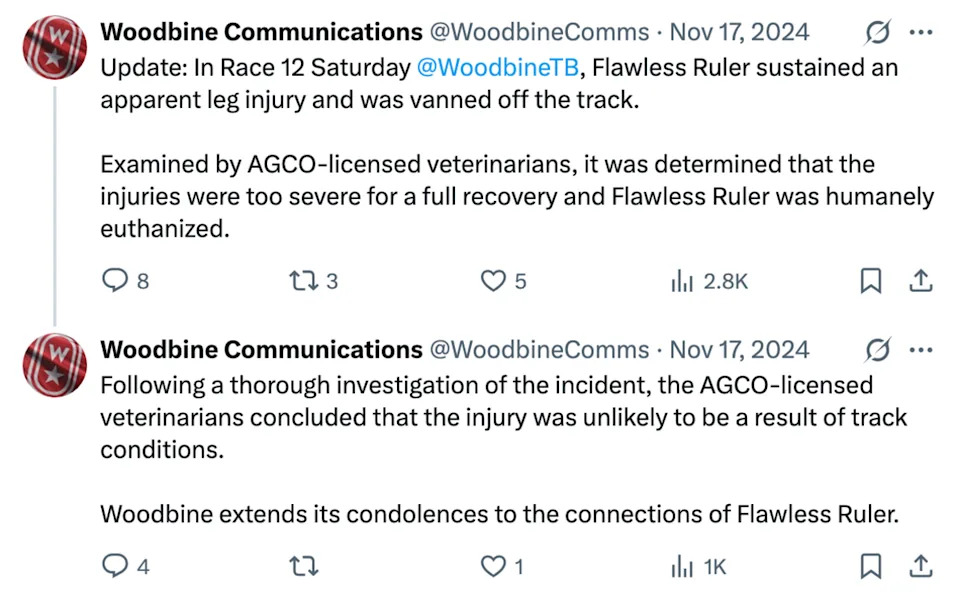
So, what can we take from this?
🔹 Transparency builds trust. We say this a lot, but it’s worth repeating. People aren’t looking for perfection – they’re looking for progress and openness. If we want to build long-term confidence in our sport, we must meet those moments head-on and not hide from them.
🔹 Accountability doesn’t need a megaphone. You don’t have to push injury updates through your biggest, most public-facing channels. Woodbine channels their updates through a ‘Woodbine communications’ Twitter account. Sometimes a quieter, dedicated account is better, like a communications or stewards feed. It still does the job, without unnecessarily magnifying the moment. You can also use Light Up Racing to communicate through our channels, if you don’t feel comfortable releasing through your primary business brand – just send us a message!
🔹 However, the most powerful voices are personal. When owners, trainers, jockeys or other connections speak directly – with care, emotion and respect – they remind people that the horse wasn’t just a competitor, but a partner. That changes everything. It makes the issue human. And when things feel human, people don’t turn away, they lean in with empathy.
Here’s a guide if you’re ever in that position, and unsure what to say:
“We’re devastated to lose [Horse’s Name] today. She was so loved by the team at [trainer name] and gave us everything she had. Our hearts are with the staff who cared for her every day, especially [groom name]. Thank you for your kind messages of support.”
It’s ideal to post it with a photo showing care – perhaps a groom photo, or around the stable, rather than a racing image.
You’ll never regret showing heart.
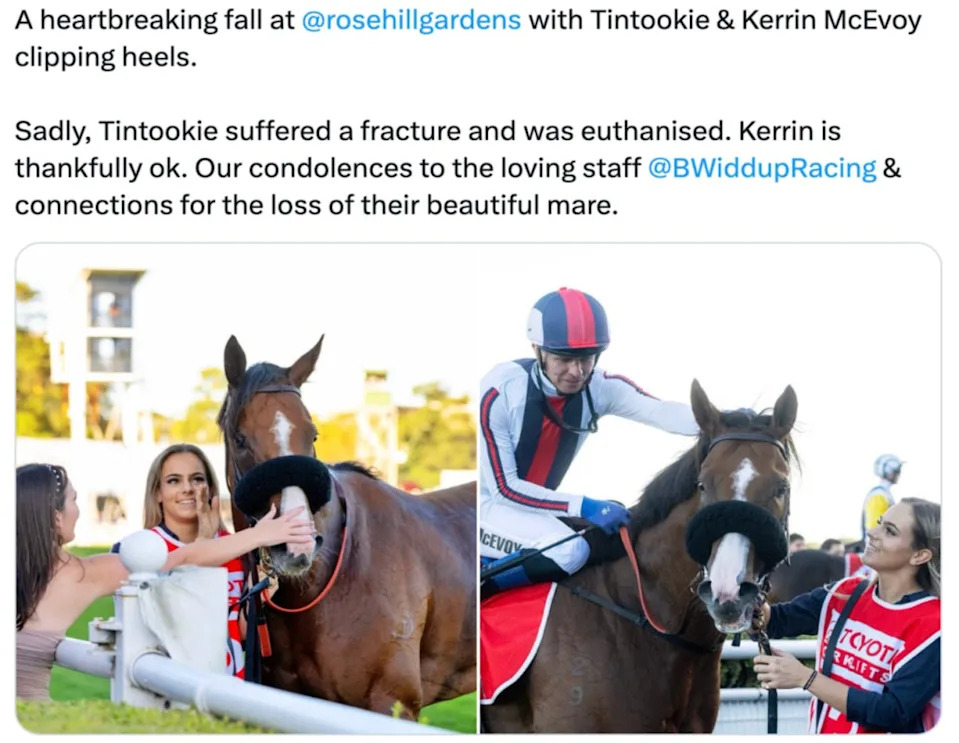
This story was originally reported by Paulick Report on Jul 3, 2025, where it first appeared.
